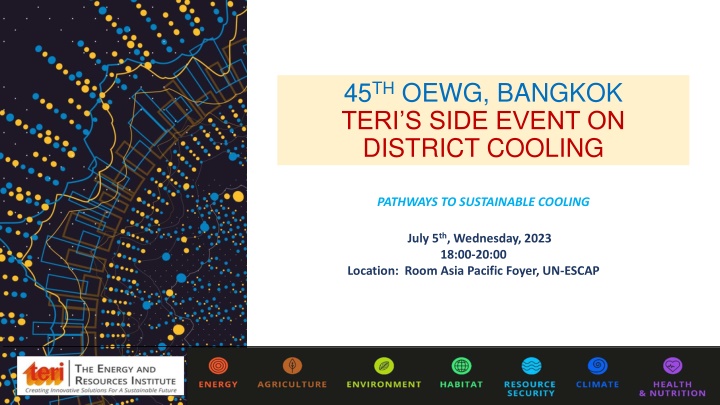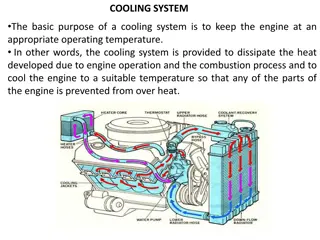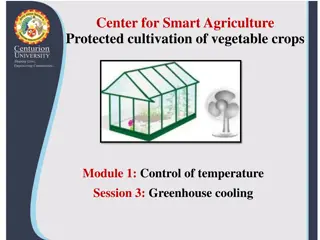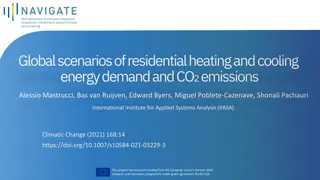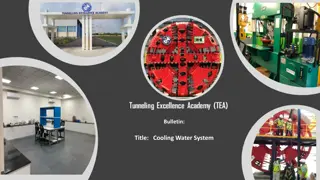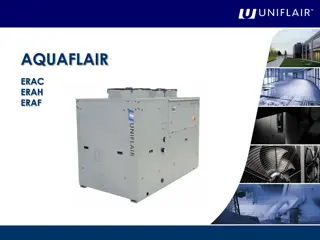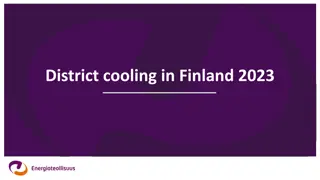Bangkok Teris Side Event on District Cooling Pathways to Sustainable Cooling
"Join the 45th Bangkok Teris side event to explore innovative strategies for sustainable cooling through district cooling pathways. Taking place on July 5th at Room Asia Pacific Foyer, UN-ESCAP, this event aims to address the challenges and opportunities in enhancing cooling efficiency. Engage with experts and industry leaders to learn about cutting-edge solutions for a more sustainable future in cooling technology."
Download Presentation

Please find below an Image/Link to download the presentation.
The content on the website is provided AS IS for your information and personal use only. It may not be sold, licensed, or shared on other websites without obtaining consent from the author.If you encounter any issues during the download, it is possible that the publisher has removed the file from their server.
You are allowed to download the files provided on this website for personal or commercial use, subject to the condition that they are used lawfully. All files are the property of their respective owners.
The content on the website is provided AS IS for your information and personal use only. It may not be sold, licensed, or shared on other websites without obtaining consent from the author.
E N D
Presentation Transcript
45THOEWG, BANGKOK TERI S SIDE EVENT ON DISTRICT COOLING PATHWAYS TO SUSTAINABLE COOLING July 5th, Wednesday, 2023 18:00-20:00 Location: Room Asia Pacific Foyer, UN-ESCAP
INTRODUCTION The global community is grappling with substantial challenges posed by climate change, as highlighted by the Intergovernmental Panel on Climate Change (IPCC). Urgent action is required to mitigate these challenges, and an internationally agreed target of achieving net zero emissions by 2050 has been established. While different economies have established their own reduction targets, the attainment of this ambitious goal relies heavily on significant technological advancements. Energy-efficient technology serves as a critical foundation for implementing effective mitigation measures. District Cooling (DC) is one of the developed energy-efficient technologies. A district cooling (DC) system is a central air-conditioning system that produces and distributes chilled water from a centralized district cooling plant to numerous buildings via an underground network of insulated pipes. Currently, the majority of air-conditioning demands worldwide are fulfilled by traditional on-site cooling systems. These systems typically consist of window units (known as split systems) used in individual rooms, apartments, or small buildings The efficiency of on-site air-conditioning equipment can vary significantly based on design and operating conditions, generally achieving only half the efficiency of the most advanced commercially available technologies. In contrast, district cooling (DC) systems employ a centralized approach, where the cooling production takes place in a central chiller plant and is subsequently distributed to end-users through a network of infrastructure.
WHY DISTRICT COOLING? Environmental policies to reduce emissions of CO2 and refrigerants and use of potable water in coolin District cooling as a public service Cost benefits Energy Savings
CONVENTIONAL COOLING (A) VS DISTRICT COOLING (B) (A) Air: Thermal, Humidity, Velocity, and Purity control in Cooling Space COOLING DEVICES ENERGY SUPPLY AMBIENT HEAT REJECTION (B) End Users ENERGY SUPPLY CENTRALIZED CHILLER PLANT AMBIENT HEAT REJECTION Chiller water supply Chiller water supply
CHALLENGES Integration with City planning with a focus on net zero, population projection a growing cooling energy demand driven by population and economic developments; elevated energy use per capita and high reliance on fossil fuels including for cooling production with an associated environmental impact RAPID URBANIZATION District cooling systems typically rely on large volumes of water for the production and circulation of chilled water. Proper water management is crucial to prevent contamination and waste. integrating district cooling systems with renewable energy sources is a significant technological challenge. Improving the central plant efficiency through Combined Cooling, Heating & Power (CCHP) & heat recovery technology, such as heat pump. design with leakage detection to prevent a single point of failure Lack of government support High upfront costs Lack of awareness among consumers Regulatory challenges DC TECHNOLOGICAL CHALLENGES MULTIPLE BARRIERS
DC BENEFITS TO THE CUSTOMER 1 2 3 4 Reduced energy costs Improved reliability Reduced environmental impact Increased space for other use
DISCUSSIONS POINT OF THE SIDE EVENTS How to enable all stakeholders such as government, manufacturers, urban local bodies, and city planners together for developing a comprehensive road map plan for effective implementation of the District cooling action plan in India Implementation of District cooling in both residential and commercial sectors by identifying the technological, financial and policy barriers Integration with city development plans, making the District cooling action plan mandatory in upcoming smart cities master plan.
THANK YOU! Shaurya Anand
